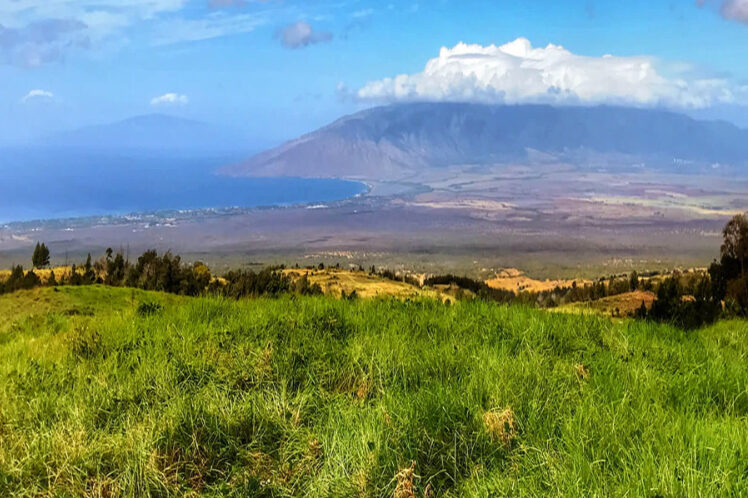
Kula
Kula Homes for Sale
Maui is known as one of the best places to live in the United States. This is not a surprise, given the island’s amazing combination of mountains and beaches, all wrapped in the relaxed vibe Hawaii has always been famous for.
While tourists flock to Hawaii filled with dreams of clear waters and palm trees, gravitating toward all the usual coastal hotspots in Maui, discerning buyers looking for a forever home or a private getaway are starting to look deeper into the island – the central part of Maui, to be precise.
Called Upcountry Maui, this area stretches from the island’s core and covers the gentle slopes of the Haleakala volcano.
At the heart of Upcountry is Kula, the largest town in the area. Less than an hour’s drive from some of the island’s finest beaches but worlds away from the crowds and bustle that typically come with them, Kula represents the blissful Hawaiian retreat everyone dreams of – tranquil, pristine, and utterly unforgettable.
Let’s explore the reasons why Kula homes for sale are becoming some of the most sought-after properties in Maui today, and how you can find your own slice of paradise here.
Sorry we are experiencing system issues. Please try again.
KULA, HAWAII: AN OVERVIEW
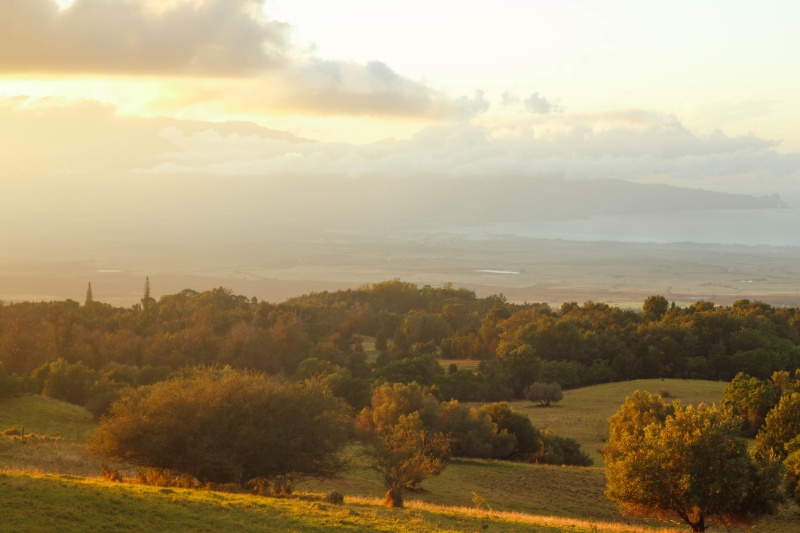
Upcountry Maui is heaven for people who dream of living in Hawaii but don’t want to deal with the typical downsides of coastal life. This is especially true for those coming from colder parts of the US. You might want a break from the cold, but not everyone can handle the year-round tropical heat and humidity – especially in busy tourist areas.
The Upcountry region skips all that. Thanks to its higher elevation and the trade winds, temperatures here stay comfortable. And while the beaches are just a drive away via Kula Highway, you might find yourself enjoying the mountains just as much.
Living in Upcountry Maui offers a balanced Hawaiian experience, blending the mountain and beach lifestyles seamlessly. Kula showcases the best the region has to offer.
Location
Kula sits on the slopes of Haleakala, Maui’s only active volcano. This shield volcano has a wide, gentle slope typical of Hawaiian volcanoes. With a peak that rises over 10,000 feet, Haleakala makes up a large portion of the island.
Kula sits at around 2,360 feet above sea level, offering cooler temperatures and refreshing breezes. Mornings often start with cloud cover, but by midday, you’re treated to stunning mountain and ocean views.
Stretching about 16 miles from Haleakala Highway in the north to Keokea in the south, Kula includes both Upper Kula, which is uphill, and Lower Kula along the Kula Highway, where more residents live.
History
Kula, meaning “open country,” has roots that go back to ancient Hawaiian times. Native Hawaiians originally used the fertile land to grow crops like sweet potatoes and taro. As time went on, cattle grazing became the primary industry, earning Kula the nickname “the breadbasket of Maui.”
In the mid-1800s, wealthy families established Kula’s farms and ranches, attracting Chinese and Portuguese immigrants who worked on sugar plantations. Japanese farmers soon joined them, making a name for Kula by producing fruits and vegetables for the island.
Today, that proud farming tradition is alive and well. Gentlemen farmers have emerged, cultivating Kula’s famous lettuce, onions, jicama, potatoes, carrots, cabbage, tomatoes, and cauliflower. Kula also excels in producing cut flowers for the state. Nearly all Hawaii’s proteas and carnations, used in leis, originate from this region.
Facts and stats
Kula covers an area of 34.54 square miles and, based on the 2020 census, has a population of 6,942. If you include the nearby areas like Keokea, Wailea, and Makena, which make up the greater Kula Census County Division along with the town of Kula, the population goes up to around 12,900. Despite some growth over the years, the population density hasn’t changed much since 2010.
The community is highly diverse with residents representing various cultures, including Latin American, Japanese, Filipino, and Chinese. The median age is around 46, with seniors 65 years and older making up approximately 25.4% of the population, and children under 18 making up 20.6%.
The median household income is $93,452, slightly higher than the Hawaii median household income of around $91,000. Compared to the US, the cost of living index in Kula is considerably higher at 160.2, but it is also around 3.3% lower than the Hawaii index. This means living in Kula is slightly more affordable than in the rest of the state.
DISCOVERING KULA HOMES FOR SALE
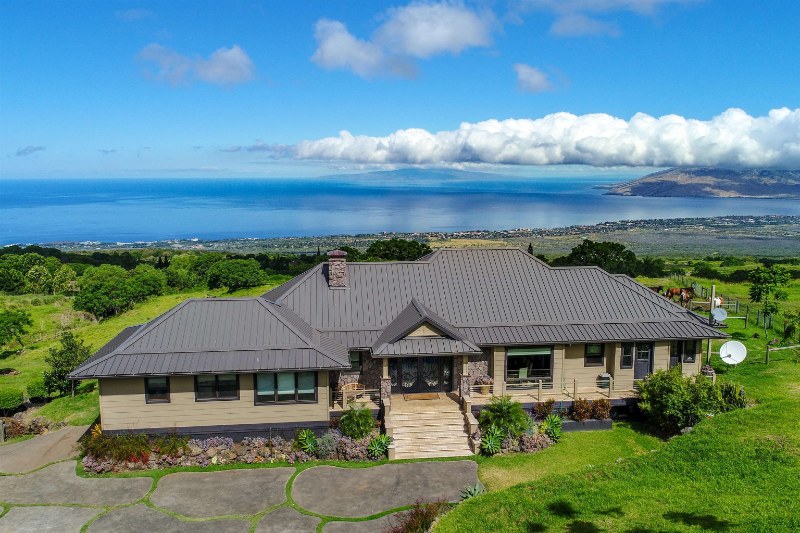
Kula feels like home the moment you arrive. Whether you’re searching for a forever home or a condo to add to your investment portfolio, this peaceful community has something to offer.
With a rich history, Kula is a place where owning property is a cherished goal – 68% of residents own their homes. The rest prefer to rent, creating a vibrant blend of long-term homeowners and temporary residents who all play a part in making Kula the dynamic community it is today.
The Kula real estate market speaks for itself. With 90.9% of the population staying all year round, it’s clear that when you find your home in Kula, you won’t want to move. And with a constant flow of people looking for rental options, the town also promises good investment potential.
Homes in Kula are priced on the higher end of the spectrum, with the median listing price well above the million dollar range. Homebuyers are willing to pay a premium for the exceptional lifestyle and location, which affords plenty of privacy, amazing views, wide open spaces, and easy access to urban conveniences.
In addition, the vast majority of homes in Kula come with expansive lot areas of between two acres to over 22 acres, perfect for a farm or as an equestrian property. Quite a few properties for sale are in fact agricultural estates with thriving fruit orchards and structures like barns, stables, and fencing.
Property types and neighborhoods
Single-family homes dominate the housing stock in Kula. You’ll find everything from small cottages to large plantation-style homes, depending on the area.
Unlike other parts of Maui, Kula spreads out rather than building upwards. Closer to the center of Kula is Keokia, a community known for traditional-style houses with large yards, offering amazing views of the valley, ocean, and nearby islands.
If you’re looking for a suburban feel, there are some great spots to check out. Near Kula Elementary School, you’ll find neighborhoods like Kalihi Place, Alanui Place, and Kai Nana Place. These neighborhoods have well-kept homes with one or two stories, some offering views of the coastline. It’s a place where families and retirees appreciate the cool mountain air and peaceful surroundings.
Going down to the lower parts of Kula, old farmlands give way to large estates. Old Lower Kula Road stands out with more homes blending traditional Hawaiian styles with modern luxury. In places like Waiakoa, you can find some of Maui’s most stunning custom homes, often coming with pools, guest cottages, and landscaped gardens. Many of these homes are over 5,000 square feet and are priced accordingly.
Similar to Upper Kula, many coastal properties in Lower Kula come with large plots of land. This gives homeowners the freedom to maintain gardens and stay close to the beach, making it easy to grow your own produce all year-round.
Popular architectural styles
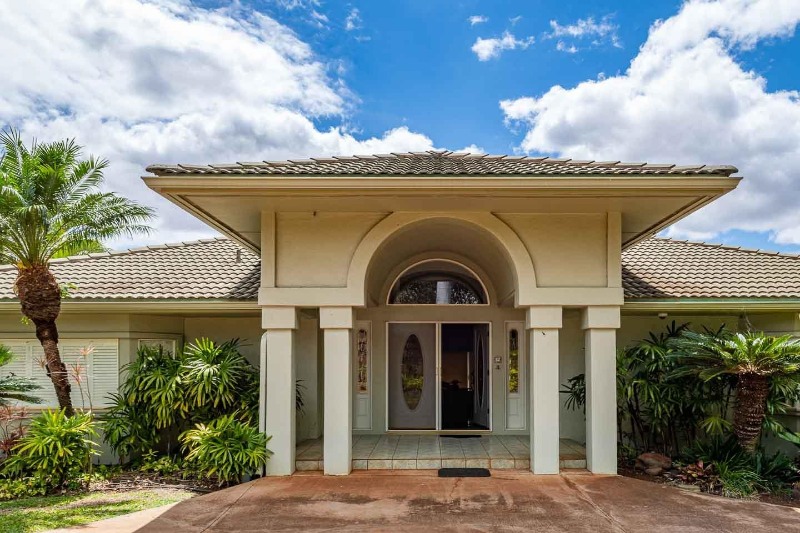
Kula is a place where every building tells its own story. Plantation homes are still around, with big porches and natural materials like wood and stone that blend perfectly with the surroundings.
Traditional Hawaiian homes are always popular, with open living spaces and wide lanais made of unique materials like lava rock and bamboo.
Mediterranean-style houses add a touch of elegance with their stucco walls and terracotta roofs.
Modern homes are notable for their spacious designs and large windows that flood the interiors with light, showcasing sleek and simple lines.
Home features and amenities
Luxury homes here have all the space you need for expansive gardens, wine cellars, pools, home theaters – anything your heart desires.
Even the relatively lower priced options don’t sacrifice comfort or style. Mid-market properties typically come with open floor plans, gourmet kitchens, and high-end finishes.All that without straying too far from supermarkets, hospitals, or schools. The airport is also just a half-hour drive away.
LIFE IN KULA, HAWAII
Climate
Kula enjoys a climate that’s distinctively different from much of Hawaii.
Considered one of the coolest areas in Hawaii, its average yearly temperature of 55.7°F is frequently complemented by the refreshing trade winds that breeze through the region. These natural features make Kula a prime destination for those seeking to escape from the tropical heat found in other parts of the state.
In July, temperatures can rise to around 75°F and drop to approximately 53°F in January. With an average annual rainfall of about 30 inches, Kula’s lush surroundings and thriving agriculture simply come with the territory.
Schools
Kula is home to several notable schools, both public and private, that serve the educational needs of residents. The schools benefit from the natural beauty and cultural heritage of Maui, often incorporating these elements into their curricula.
The top rated schools serving the area include:
- Kula Elementary School (K – Grade 5)
- Kamehameha Schools Maui Campus (K – 12th Grade)
- Seabury Hall (Grades 6-12)
- Carden Academy (K – 8th Grade)
- Haleakalā Waldorf School (Early childhood through 8th grade.)
- King Kekaulike High School (9th to 12th Grade)
The KulaMalu Town Center and marketplaces
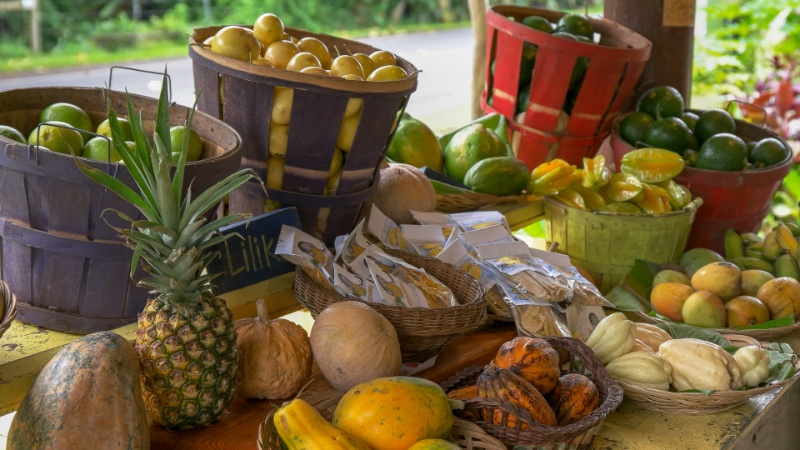
At the heart of Kula is the KulaMalu Town Center, the locals’ go-to place to shop for groceries, browse boutique stores, and enjoy some of the area’s best food trucks. Community events and festivals on the football field make it a vibrant gathering spot.
The island’s largest branch of Longs Drugs is found at the Town Center and has traditionally been the main reason to come down. For the past 15 years, the Upcountry Farmers Market, held every Saturday also at the Town Center, has been a major draw, offering fresh produce and goods from local farmers and vendors.
Kula is dotted with smaller marketplaces and shops, adding to its charm. The most renowned is Kula Country Farms across from Rice Park. This farm supplies local retailers and hosts annual strawberry pickings in spring and pumpkin patches in fall – perfect for kids.
Local food scene
Kula’s rich farming landscape makes for a vibrant food scene with a range of dining options, from high-end restaurants to traditional Hawaiian food stops.
A great way to start the day is a visit to Grandma’s Coffee House, a family-run business since 1918 that has been a big part of the community. It’s famous for its gourmet beans and banana bread.
Another breakfast favorite is the Komoda Store and Bakery on Baldwin Ave. in Makawao. For over a hundred years, this bakery has drawn crowds with its stick donuts, guava malasadas, and cream puffs, served in a cozy shop with unabashedly retro vibes.
For lunches and dinners to impress, the family-owned Mama’s Fish House in Paia is the area’s best spot for seafood. It’s popular with both locals and tourists, so making a reservation is generally a good idea. For casual meals, Kula Bistro is the place to go, known for serving tasty Italian dishes made with fresh ingredients sourced from the area.
Kula is also at the center of Hawaii’s wine scene. Ulupalakua Vineyards, run by MauiWine, offers an interesting variety of wines, including ones made from the unique Maui Gold pineapples.
Outdoor recreation
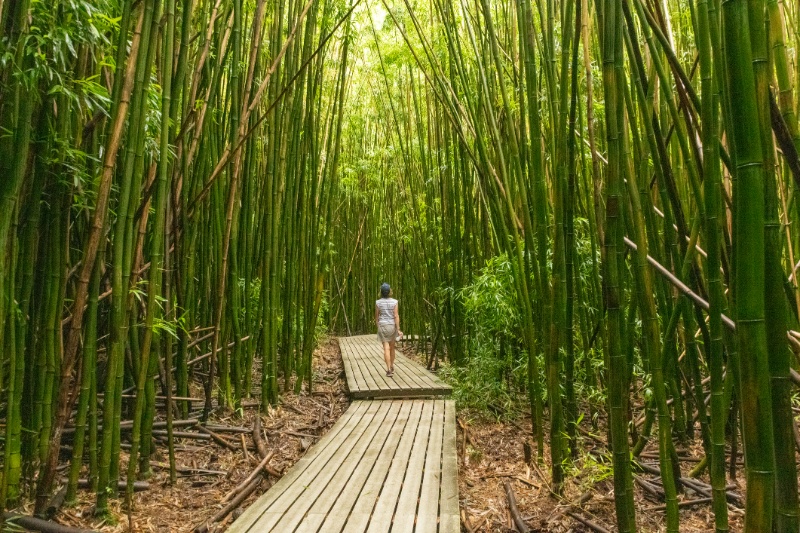
The nearest beaches to Kula are about a 20 minute to 40 minute drive away, in the towns of Paia, Kihei, Wailea, and others. Within Kula, instead of beach scenes, you can marvel at dense forests and rolling hills that make the journey just as amazing as the destination.
Here are three Kula spots that perfectly blend adventure and beauty as few other places can:
- Polipoli Spring State Recreation Area – This hidden treasure features cool, crisp air and misty trees, providing a refreshing take on the tropics. The ten-acre area is home to feral pigs and Methley plums hanging from the trees, and offers stunning views dominated by towering redwoods.
- Hosmer’s Grove – Located within Haleakala National Park, this eucalyptus-filled forest was one of Hawaii’s first experimental forests. Perfect for nature lovers, it offers beginner-friendly hikes through pines, spruces, sandalwood, ‘ohia, and koa. Aromatherapy is free!
- Kula Botanical Garden – Situated on the slopes of Haleakala, this family-owned garden spans over eight hectares and features a myriad of distinct plants, all labeled with their names, origins, and countries. Discover impressive rock formations, waterfalls, an aviary, a koi pond, and a tiki exhibit – all while breathing in the fresh mountain air.
FIND THE PERFECT HOME IN KULA WITH DAVE FUTCH
Dave Futch settled in Maui back in 1988 and quickly made it his home. He began his journey as a real estate agent in 1993, gaining a genuine feel for the island’s diverse climates, landscapes, and unique communities. His dedication has not gone unnoticed; he has picked up quite a few awards along the way, including Realtor of the Year and ranking in the top 3% of Maui Realtors for three years straight.
Finding the right home among all the amazing Kula homes for sale can be daunting without expert guidance. Dave is ready to help. Reach out to him and his team by phone (808.280.9600) or by email to get one step closer to the Upcountry Maui lifestyle you’ve always wanted!

